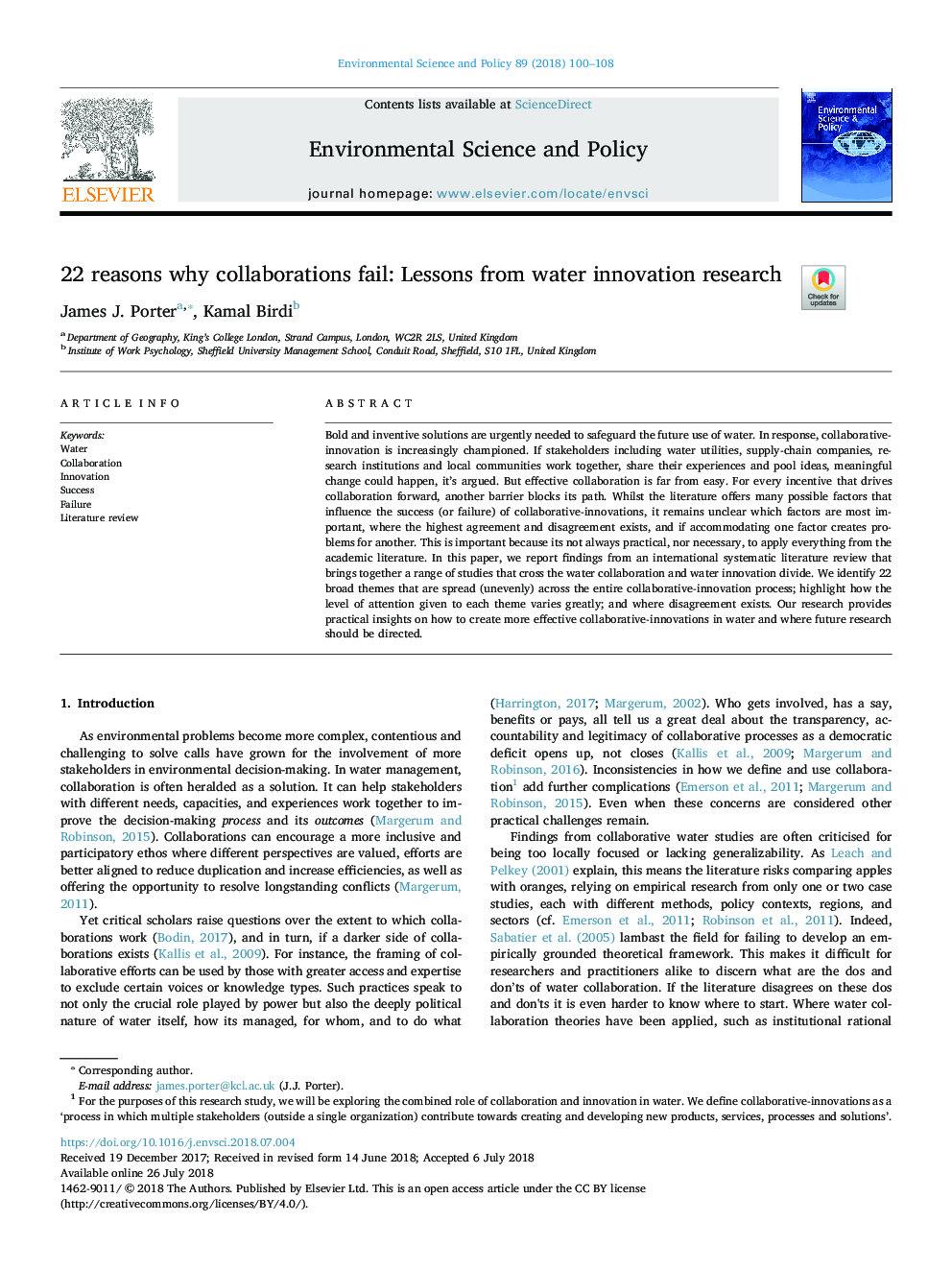| Article ID | Journal | Published Year | Pages | File Type |
|---|---|---|---|---|
| 7465666 | Environmental Science & Policy | 2018 | 9 Pages |
Abstract
Bold and inventive solutions are urgently needed to safeguard the future use of water. In response, collaborative-innovation is increasingly championed. If stakeholders including water utilities, supply-chain companies, research institutions and local communities work together, share their experiences and pool ideas, meaningful change could happen, it's argued. But effective collaboration is far from easy. For every incentive that drives collaboration forward, another barrier blocks its path. Whilst the literature offers many possible factors that influence the success (or failure) of collaborative-innovations, it remains unclear which factors are most important, where the highest agreement and disagreement exists, and if accommodating one factor creates problems for another. This is important because its not always practical, nor necessary, to apply everything from the academic literature. In this paper, we report findings from an international systematic literature review that brings together a range of studies that cross the water collaboration and water innovation divide. We identify 22 broad themes that are spread (unevenly) across the entire collaborative-innovation process; highlight how the level of attention given to each theme varies greatly; and where disagreement exists. Our research provides practical insights on how to create more effective collaborative-innovations in water and where future research should be directed.
Related Topics
Physical Sciences and Engineering
Energy
Renewable Energy, Sustainability and the Environment
Authors
James J. Porter, Kamal Birdi,
